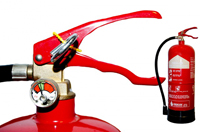 When you feel stuck at a job you hate, it’s easy to focus on your misery. You may even be tempted to switch jobs. Before you find yourself stressed out, unemployed or burning important professional bridges, though, consider taking these steps.
When you feel stuck at a job you hate, it’s easy to focus on your misery. You may even be tempted to switch jobs. Before you find yourself stressed out, unemployed or burning important professional bridges, though, consider taking these steps.
- Determine what needs to change.
Maybe a different boss, easier clients or a raise would help you be happy at work. Maybe you’re tired of the commute, itching to climb the ladder or perturbed by a co-worker. Identify the cause of your frustration as you figure out exactly what you don’t like about your job.
- Be clear about what’s important to you.
Your job frustration could stem from the fact that you’re not getting something that’s important to you. For instance, maybe you value work/life balance but work a lot of overtime. By determining what’s important to you, you can decide if you can live with your job or if you need to find something new.
- Talk to someone you trust.
Sometimes, it’s difficult to see a situation clearly. Confide in a trusted friend or mentor and get a different perspective on your job situation.
- Make changes.
Perhaps the problem with your job is the commute. Can you alter your work schedule to avoid rush hour traffic or work from home? A simple solution may be exactly what you need to find job satisfaction again.
- Be discreet.
Misery loves company, but try to keep your job displeasure to yourself. If you share with co-workers, you potentially jeopardize your job. Plus, complaining never makes any situation better.
- Start looking for a job.
Rather than wait until you’re absolutely sure you should quit your current job, start a job search now. You might end up finding something with a shorter commute, better work hours or hands-off manager. Simply searching job postings online can help jumpstart a new career you love.
- Find something new before you quit.
No matter how much you hate your job, don’t quit until you secure another job. It’s easier to get a job while you’re still employed, and it’s almost always better to receive a paycheck from a job you hate rather than be unemployed.
- Preserve your bridges.
Your future success could depend on the relationships you have at work now. As an example, you need your current employer to give you a good reference. Be careful about how you act and don’t burn your bridges.















